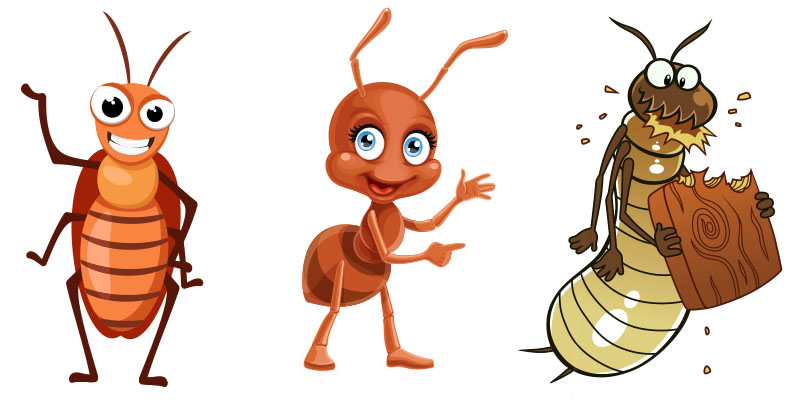Pests are an unwelcome presence in any home – in Jacksonville or anywhere else – and unfortunately, their presence can often attract other pests. Understanding why pests attract each other can help homeowners take preventative measures to avoid infestations that can easily become too difficult to handle.
How Pests Attract Each Other into Homes
All pests really need to survive (and even thrive) are three basic things: food, water, and shelter. Where do pests like termites, ants, roaches, and rodents find these three necessities? The answer is simple – your house. Your home is flush with abundant food sources, plenty of water sources, and comfy-cozy shelter. So, it’s easy to understand why insects and rodents are attracted to residential properties. Now, let’s take a few moments to explore the sorted details and other reasons why termites attract ants, roaches, and rats into homes.
It can All Start with Termites
Termites are wood-destroying insects that can cause significant damage to homes. They are attracted to wood, particularly wood that is moist. Unfortunately, this type of wood is also attractive to other pests such as ants, roaches, and rats. These pests are attracted to the same moisture and decaying wood that termites feed on, creating a perfect environment for multiple pest infestations. What’s worse, is these particular pests do nothing else than just tunnel and eat. Termites don’t sleep. Instead, they work 24 hours a day, 7 days a week, and do so for their entire lifespan, which lasts one to two years.
Ants March Along
Termites eat wood and tunnel from their colonies to protect themselves while they consume the wood in your house. Carpenter ants live in wood that is damaged by moisture or termites. So, this means that carpenter ants can be a sign of termites. Strangely, ants and termites are natural enemies, however, carpenter ants and termites have a symbiotic relationship.
Ants are also attracted to the moisture and humidity that is often present in areas where termites are active. Ants are particularly attracted to subterranean termites – which are prominent in Jacksonville – which build their colonies underground and create mud tubes to reach wood sources above ground. These mud tubes create a perfect environment for ants to follow and access the same wood sources. But, termites and ants aren’t the only pests who are attracted to the same elements.
Roaches Follow
Roaches are also attracted to the same moisture and decaying wood that termites feed on, making homes with termite activity more attractive to roaches. (Fun fact: roaches and termites are actually related species, so, if there is a lot of moisture that will definitely also attract roaches.)
Although, roaches and termites will not share the same space – mostly because subterranean termites stay hidden and protected in their mud tubes/ tunnels, and roaches cannot get inside those tunnels.
Roaches also feed on the excrement of termites, which provides them with a source of nutrition. In addition, termites create small crevices and cracks in wood as they feed, which provide nice hiding places for roaches.
Rats Scurry Behind
Damaged wood gives rats the opportunity to enter residential homes.
Rats are additionally attracted to areas with termite activity because termites can occasionally be a food source for them (though termites are not part of the rodents’ main diet). Rats are opportunistic feeders, and they will consume termites when the insects are available. Moreover, rats are attracted to the same moisture and decaying wood that termites feed on, and homes with termite activity provide them with a warm and sheltered environment.
As you can plainly see, termites attract other pests such as ants, roaches, and rats into homes because they all share a common interest in the same food sources and environmental conditions. Moisture and decaying wood are particularly attractive to these pests, and homes with termite activity provide an ideal environment for multiple pest infestations.
Homeowners should take preventative measures such as regular termite inspections and treatments to avoid infestations and minimize the attraction of other pests. Professional pest control services can help identify and address termite activity and other pest problems, ensuring that homes remain free from unwelcome guests.

